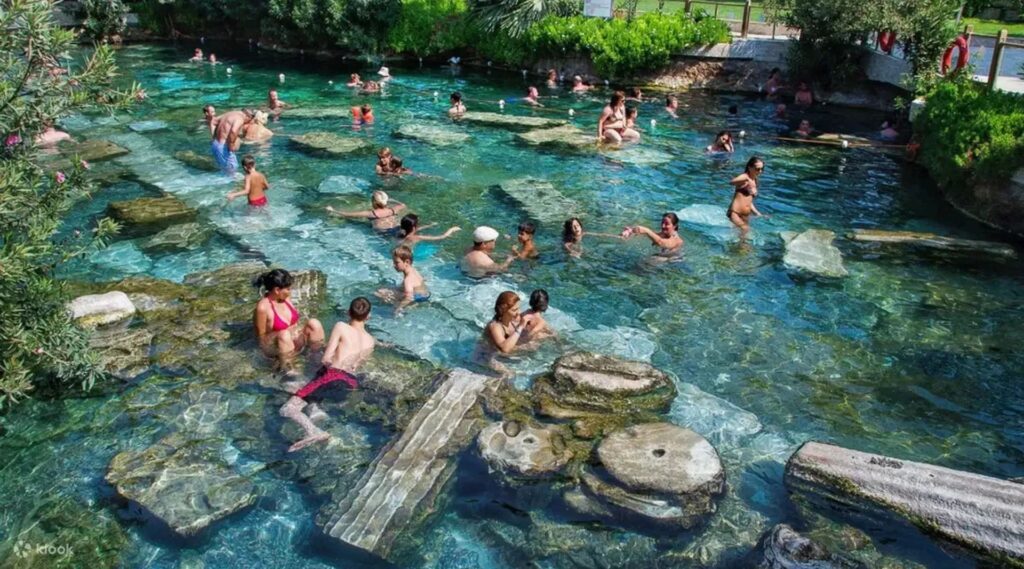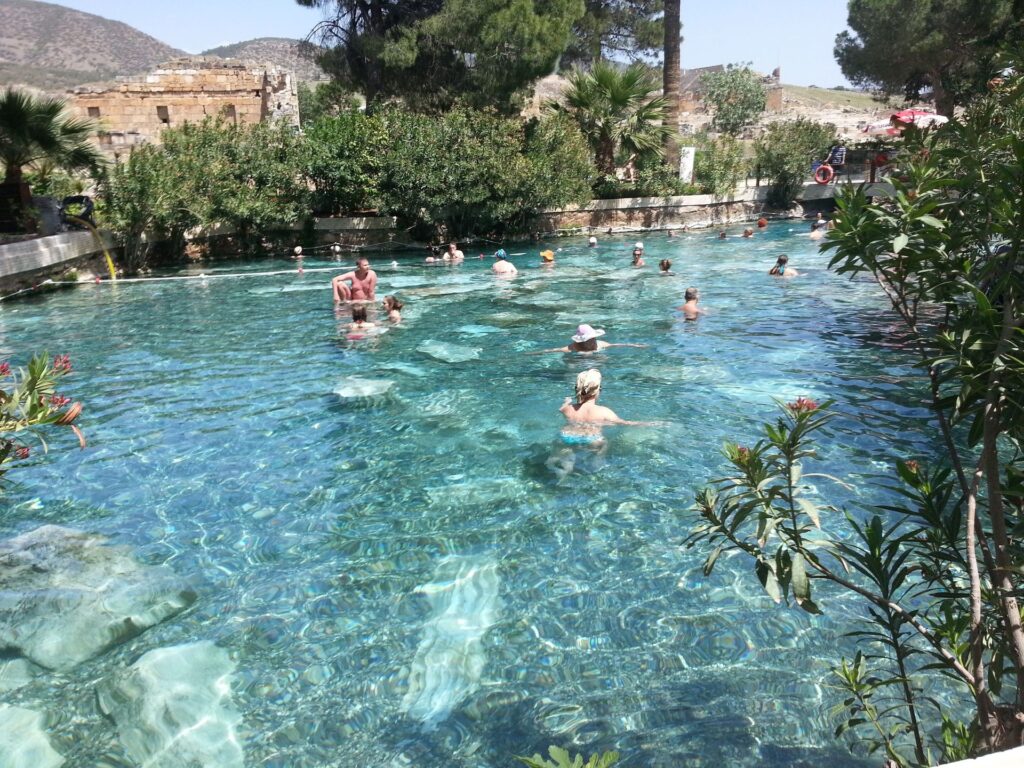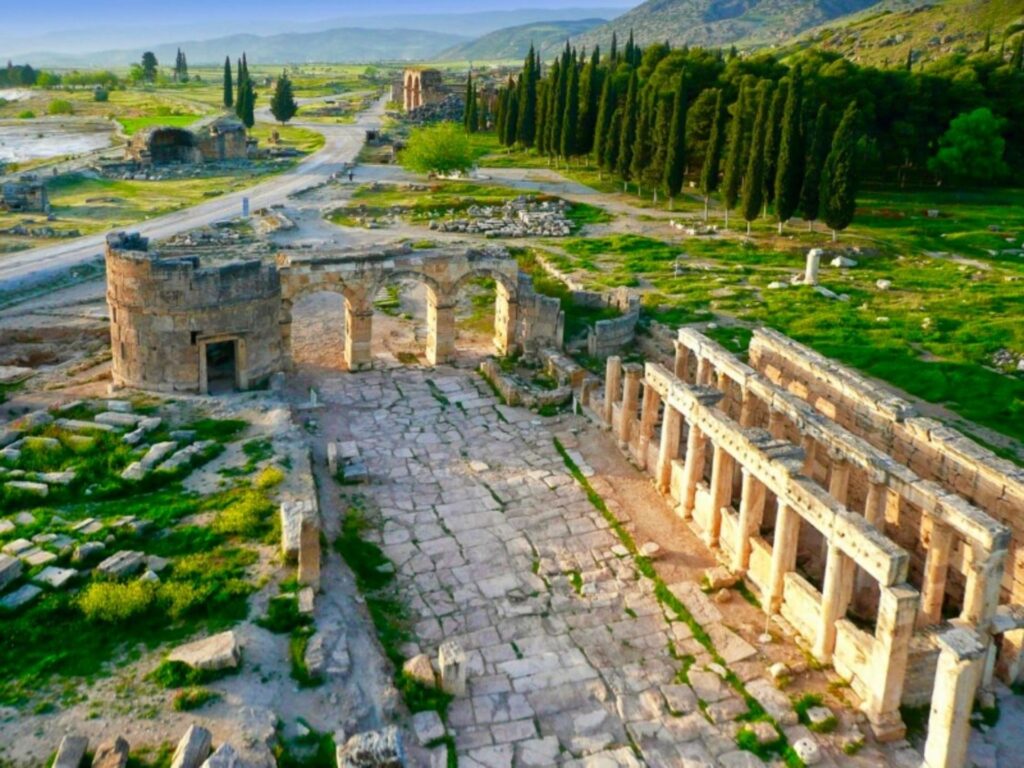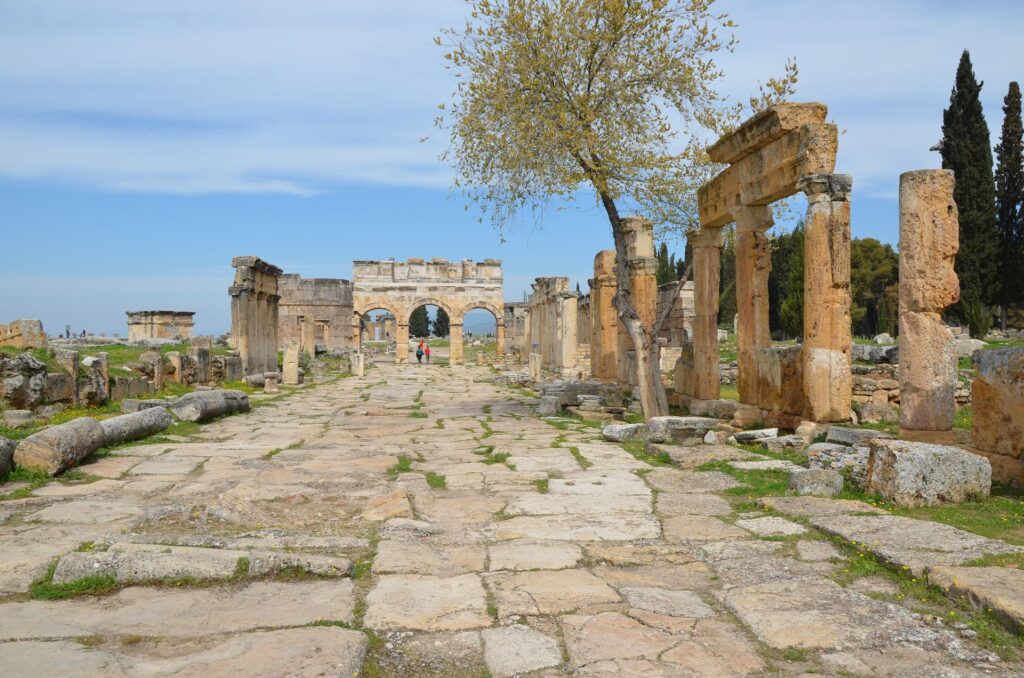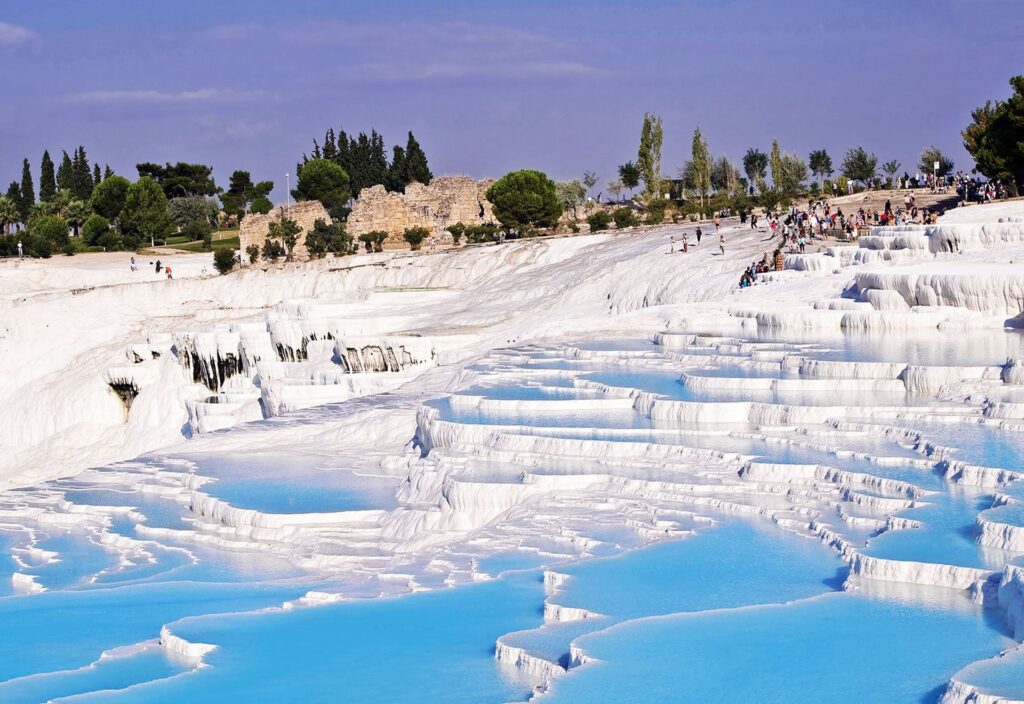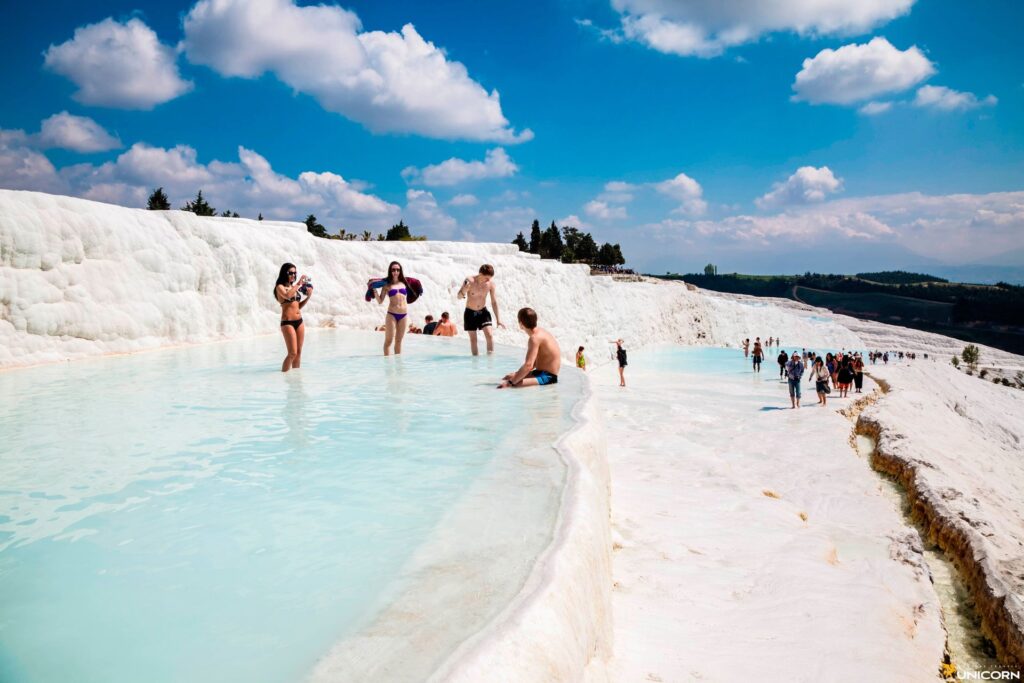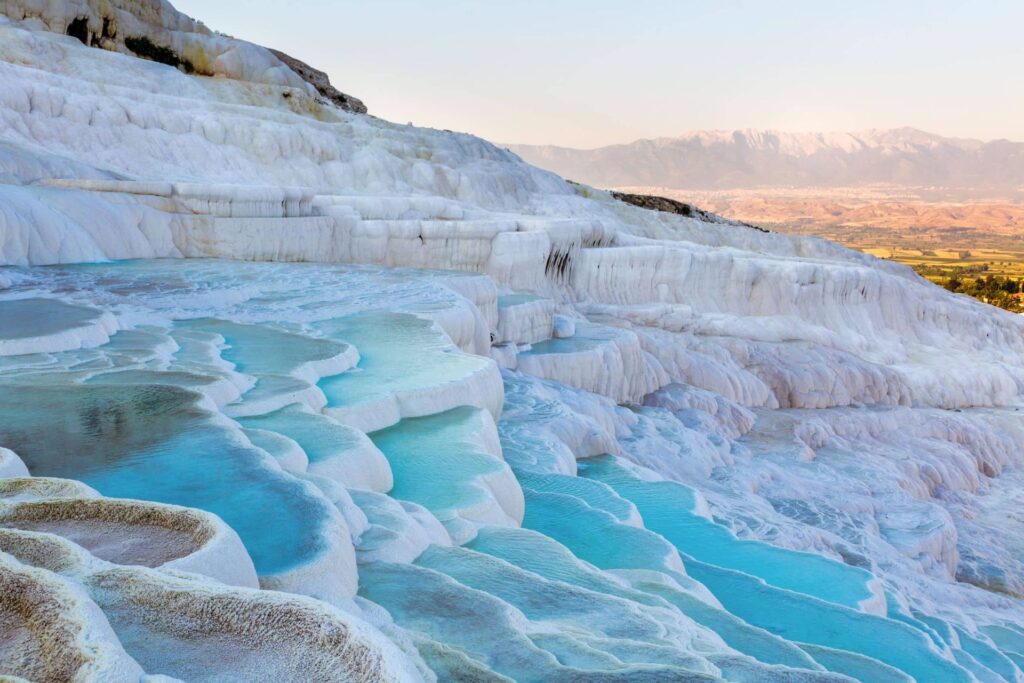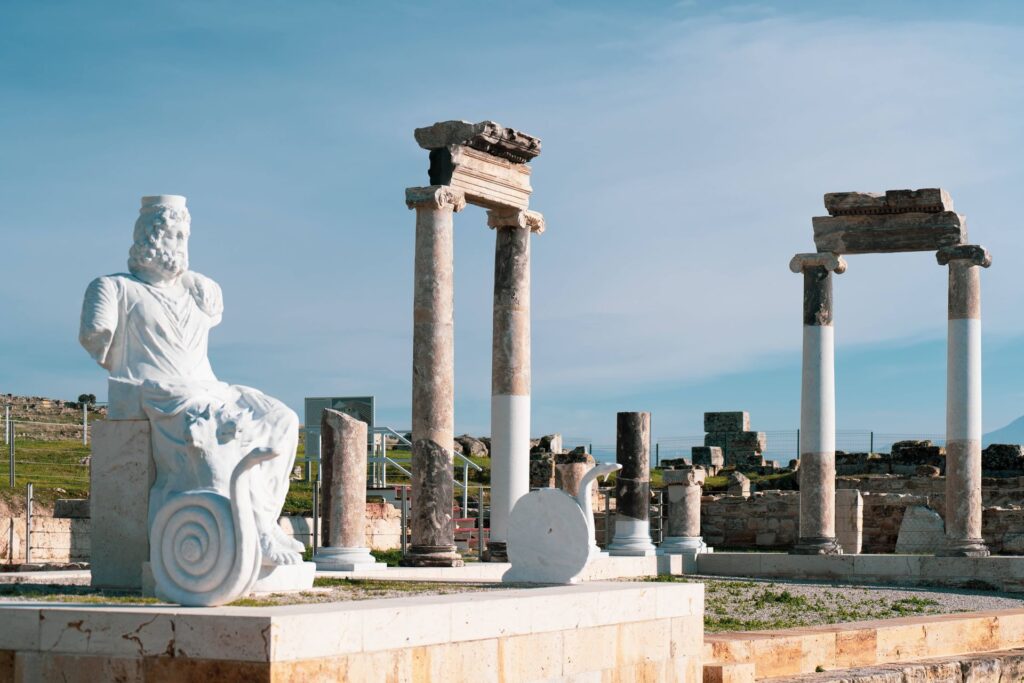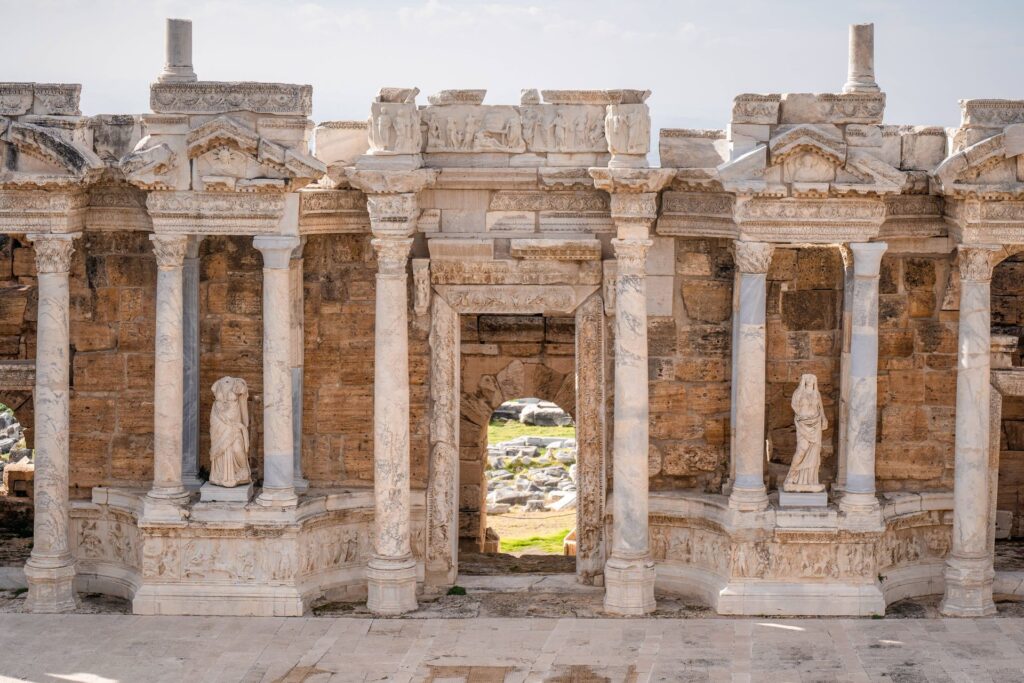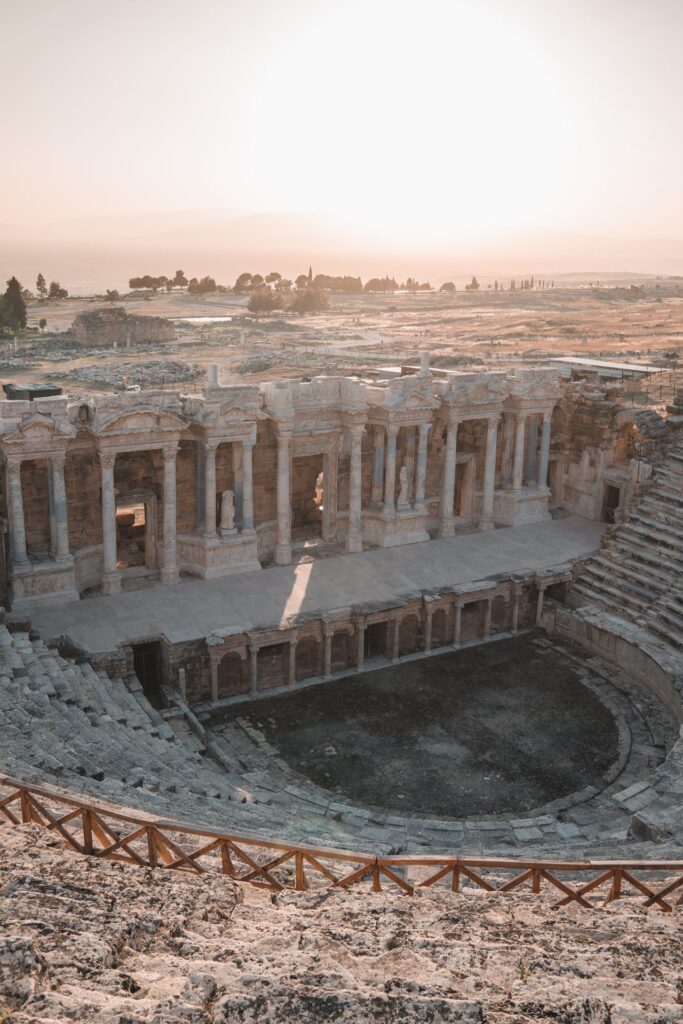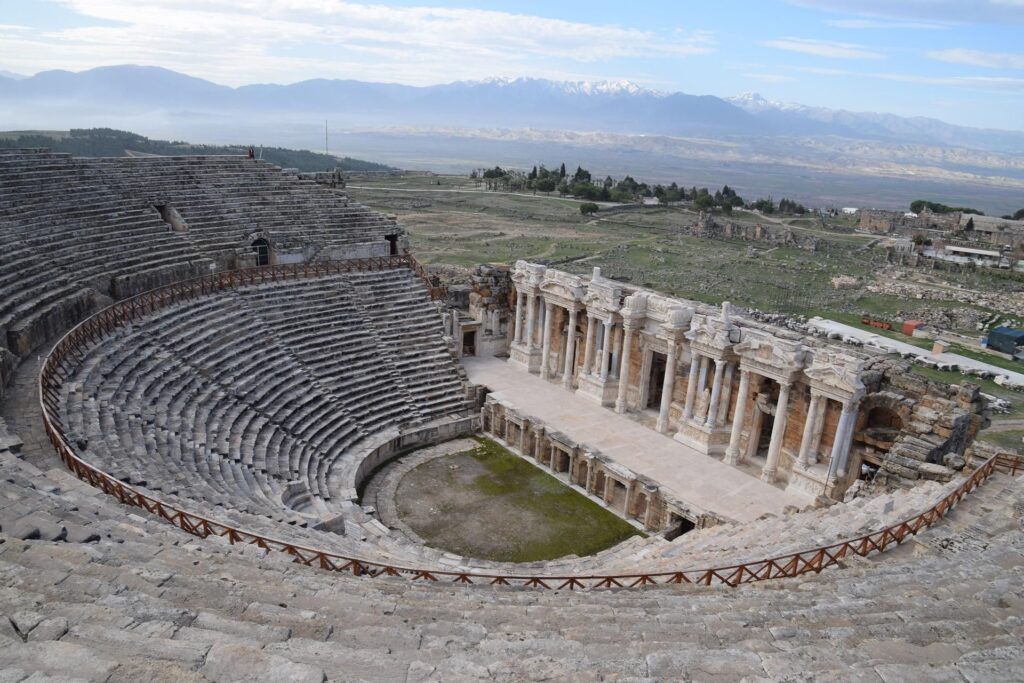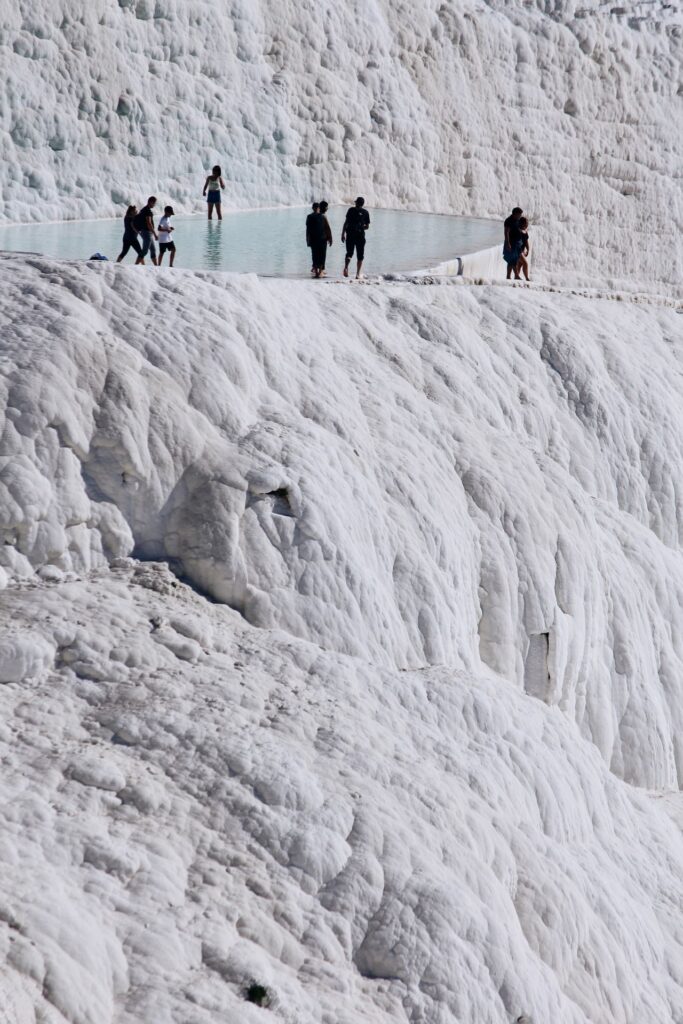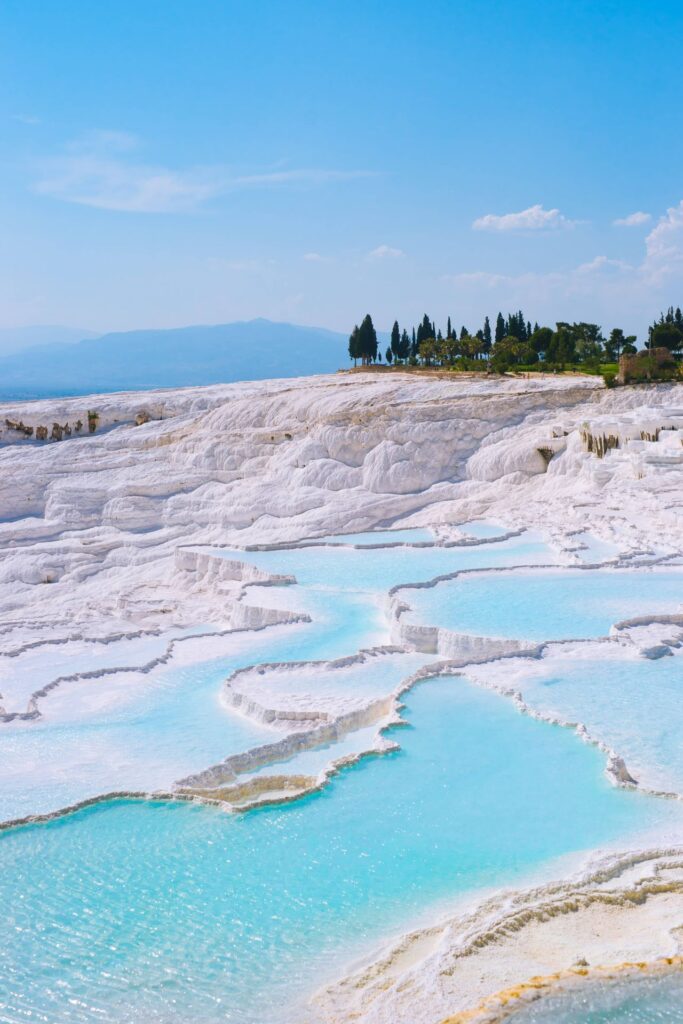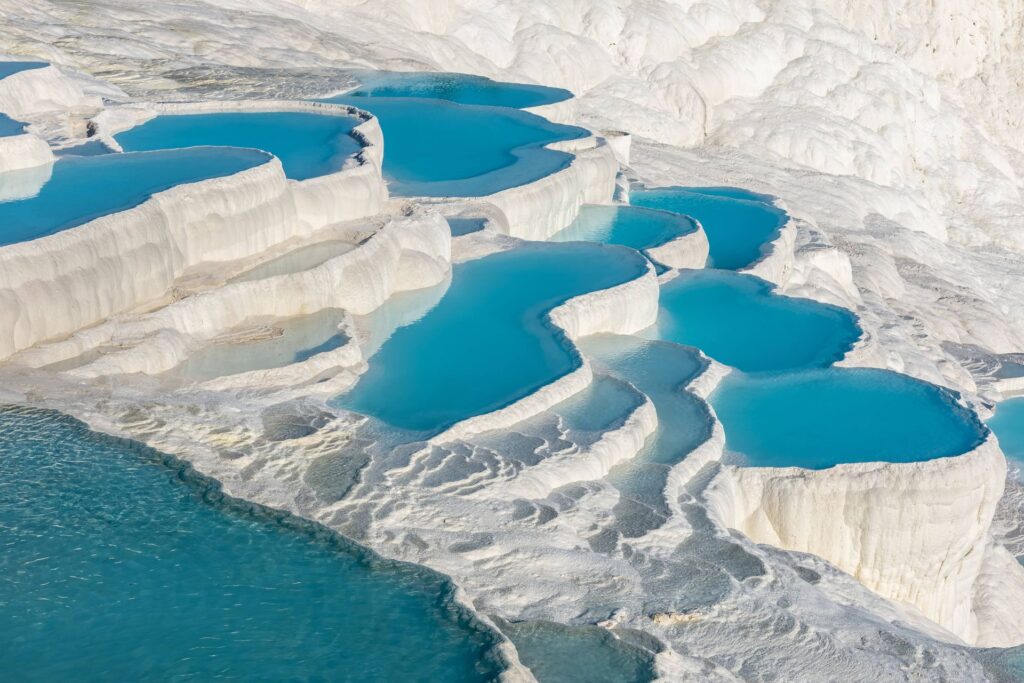Pamukkale, one of Denizli’s most important districts in terms culture and tourism, is home to tourist attractions such as the Pamukkale travertines and the ancient city of Hierapolis, which are registered on the UNESCO World Heritage List as natural and archaeological sites. Other important sites around Pamukkale are the Karahayıt Hot Springs, the Denizli Cable Car and Bağbaşı Plateau, Akhan Caravanserai, Gözler Lavender Gardens, Seyir Tepesi, and Çamlık Park as well as its museums, ecotourism destinations, and plateaus.
THE COTTON CASTLE
Leave your body to the healing water of the Hierapolis! Hierapolis ancient city is home to the Cotton Castle, also known as the thermal baths of the Hierapolis. It is called Cotton Castle for a reason, from afar the baths look like a castle made out of cotton due to its white color and soft, fluffy look.
The thermal pool is great for several diseases and disorders such as skin issues, heart-related problems, and many others. As you dip yourself in the pool against the jaw-dropping scenery ahead, you will relax and have some quiet time to meditate and reflect on life.
HIERAPOLIS ANCIENT CITY
Hierapolis, an ancient spa city in the Roman and Byzantine periods and included in the UNESCO World Heritage List, is located 20 km away from Denizli city center. This region is known as Pamukkale, home to a world-famous marvel of calcite travertine filled with warm, mineral-rich waters. Pamukkale is a popular thermal center; its calcium and iron rich waters are believed to have healing properties. The ancient city above Pamukkale was founded by the King of Bergama Eumenies II in the 2nd century BCE and it is believed to honor the name of Hiera, the wife of Telephos, the legendary founder of ancient Pergamum.
The city grew and stood out thanks to its hot springs. Pamukkale is famous for its calcite travertines (or terraces) filled with warm, mineral-rich waters. The region where Pamukkale is located has a special structure with its thermal springs originating from Lykos (Çürüksu) Valley. In Hierapolis, you can see baths, temples and ruins of ancient theater. You can swim in the Cleopatra Pool, a spring rumored that the Egyptian Queen took a bath.
Hierapolis, the city where Saint Philippus, one of the twelve apostles of Jesus Christ,was killed, is one of the sacred settlements in terms of Christianity. It was declared a religious center in the century in the 4th century CE, and during the Byzantine period, became Episcopal Center. The Tomb of St. Phillipus (Aziz Phillipus Mezarı) and the Martyrium, unearthed as a result of excavations in the ancient city,are among the sacred structures of Christianity.
The old Roman bath located in Hierapolis Ancient City (Hierapolis Antik Kenti) has now been converted to Hierapolis Archeology Museum (Hierapolis Arkeoloji Müzesi). You can visit the various archaeological finds unearthed in and around Hierapolis in the halls of the museum with stone blocks made of travertine.
Plutonium
In the archaeological excavations carried out in the Hierapolis Ancient City (Hierapolis Antik Kenti), the Plutonium Sanctuary (Hell’s Gate) (Cehennem Kapısı) and the entrance of the cave, which was accepted as the “gateway to the land of the dead” in the ancient world where they were unearthed. In the Ancient Age, in which the pagan belief was dominant, Hierapolis means “Holy City”. This name: it comes from the existence of a cave through which thermal waters and gas (carbon dioxide) that causes the deaths of living beings coming close to it escape. Because of these features, the cave was regarded as the entrance to the underworld, where the god Pluto and his wife Persophone ruled. Around the cave was placed a sanctuary, a great touristic visit in Antiquity and built between the 1st century BCE and the 3rdcentury CE. Visitors to this sanctuary include Cicero, Emperor Hadrian, and Caracalla, the philosopher Damascus, as the most famous. Visitors dropped birds into the cave, and they were immediately poisoned to death.
The building complex, unearthed as a result of the excavations carried out in the 2013 excavation season in the Plutonion Sanctuary (Hell’s Gate), constitutes a unique site in the world. In excavations,it enabled the original source of thermal waters that created famous Pamukkale travertine pools to be brought to light. In addition, it led to the discovery of the sanctuary built around the cave, where the carbon anhydride gas that caused the death of small animals and birds that approached.
Among the most valuable artifacts found in the excavation are a marble head of the goddess Aphrodite and a marble Dionysos Statue (Dionysos Heykeli), made in Hellenistic time, with a special hair system and two holes in her ear for wearing gold earrings. In addition, the most extraordinary find is a marble snake statue and a marble statue of Kerberos, taken out of the water and protecting the entrance to the cave.
The three-headed “Hell Dog of Hades”, a unique work in the world in terms of its height Marble Kerberos statue at 1.30 m., stands at the Gate of Hell according to mythology.
LAODIKEIA ANCIENT CITY
The city, an important city of the Roman period in the 1st century BCE in Anatolia, is home to great works of this period. The ancient city of Laodikeia (Laodikya Antik Kenti), about 20 minutes by car from Denizli city center, is one of the must-see places with its feature of being one of the largest trade centers in history.
The city, located in the middle of Lykos(Çürüksu)Valley in the intersection of Phrygia, Lydia and Caria regions in ancient geography,was founded on behalf of his wife queen Laodike by Seleucid King II. Antiochus Teos in the south of the Lykos River. In ancient sources, it is mostly referred to as “Laodikeia and Lykum (Laodikeia on the shore of Lykos”.
Laodikeia, which is of great importance to the Christian world, has been a “Holy pilgrimage center”since the 4th century CE. Mentioned in the Bible and one of the seven famous churches of Anatolia. The Laodikeia (Pilgrimage) Church is located there.
Among the important structures of Laodikeia that have survived to the present day are Anatolia’s largest stadium, theaters, four-bath complex, agoras, Nympheum, main entrance gate, parliament building, temples, churches and monumental street.
Laodikeia Ancient City is included in UNESCO World Temporary Heritage List.
APHRODISIAS ANCIENT CITY
Added to the UNESCO World Heritage List in 2017, Aphrodisias is named after Aphrodite, the Greek goddess of love.
Aphrodisias is a remarkably well-preserved city in ancient Caria. The site is located 100 km east of Aydın and can be reached easily for a day trip from Aydın, İzmir, and even from Antalya. The city was famous in antiquity for its Temple of Aphrodite and its marble sculptures and sculptors. Aphrodisias prospered under the Roman empire as Romans claimed their ancestry through Aphrodite and her son Aeneas. Aphrodite of Aphrodisias, similar to the Ephesian Artemis, was a continuation of the Anatolian Mother Goddess as evidenced in her iconography. The Anatolian Mother Goddess was a powerful and dominant cult in Anatolia from the time of Çatalhöyük in the Neolithic period.
The high-quality marble quarries near the city and the qualified sculptors of Aphrodisias gave the city enormous wealth and prosperity during the Roman era. The earliest settlement in the city goes back to the Chalcolithic period; during this period and through to the Bronze Age, the theater hill was a mound. Aphrodisias was away from the coastline and the main routes of the later period, and as a result the city was protected from archaeological looting throughout the centuries. When archaeologists discovered Aphrodisias in the 19th century, a great part of it had survived. Extensive excavations by Turkish and British archaeologists for over 60 years, have revealed several buildings and hundreds of statues of high quality. These statues and excellent reliefs are displayed on site at the Aphrodisias Museum. The restorations of the Propylon and Sebasteion, give visitors a great idea of how the city once looked. The Propylon was the monumental gateway to the grounds of the Temple of Aphrodite, and the Sebasteion was a temple with a beautiful stoa on either side decorated with reliefs depicting the lives and achievements of the Julio-Claudian dynasty and mythological scenes. The theater, agora, odeon/bouleuterion, baths, and the biggest stadium in Türkiye with a capacity of 30,000 spectators are almost intact. The village of Geyre, which in the past was built over the ancient city but was relocated around 1960, presents visitors with traditional houses and architecture.
